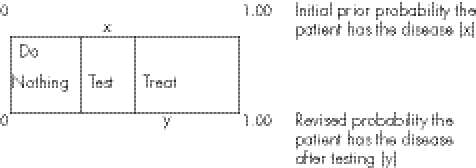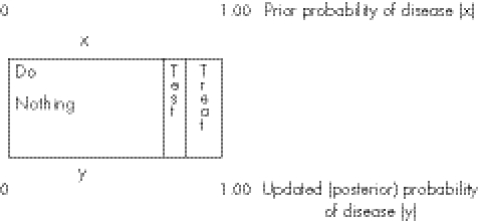Oliver Wendell Holmes MD was one of America's best known literary figures of the 19th century. His collected works of poetry, novels, letters, essays, and medical writings fill 15 volumes.1 His poems include the popular “Old Ironsides” (1830)2 and “The Deacon's Masterpiece”:3
“Have you heard of the wonderful one‐hoss shay
That was built in such a logical way
It ran a hundred years to a day.”
His essays included “The Autocrat at the Breakfast Table” (1857).4 He gave us the word “anesthesia” to describe the use of ether during surgery by Morton in 1846.5,6
Graduating from Harvard College in 1829, he learned medicine in Boston and went to Paris from 1833 to 18357 to study with Pierce C A Louis8,9 who, in turn, was a student of Rene Laënnec, inventor of the stethoscope.10 Holmes' MD degree was granted in 1836 and he opened his practice in Boston. “Holmes was not kept busy with patients, since a reputation for wit and poetry has never been known to increase a doctor's practice.”11 He taught medical students and was Dean of the Harvard Medical School from 1847 to 1853, continuing as a professor there until 1870.12
The logic of medicine
Holmes wrote of his education in Paris under Louis: “I have learned at least three principles … not to take authority when I can have facts, not to guess when I can know, not to think a man must take physic because he is sick”13 Holmes' logic can be seen as three diagnostic choices: do nothing, test, or treat. This choice depends on the probability that the patient has the disease and the value of treatment. It depends on the accuracy of the test and the consequences of treating compared with doing nothing. This logic can be visualized and summarized by the box diagram shown in fig 1.
Figure 1 Medical school in a box. The prior index of suspicion (probability), choice of do nothing, collect more information (test), or treat and the revised probability after testing.
The prior probability of disease (the index of suspicion) is shown by the upper horizontal part of the box, going from zero on the left to certainty on the right. Somewhere in the middle of this probability range is the decision to test. This is shown by the two vertical lines in the middle of the box. Testing should only be done if the test results could change the decision to treat or not. If the test is accurate, cheap and non‐invasive, testing should be done over a wider range of prior probabilities. The vertical lines for testing in the box should then be wide apart. If the test is inaccurate, invasive, and costly, testing should rarely be done and the testing lines should be close together.
If the patient's prior probability of disease is within the range of testing and the test is carried out, this probability is revised. For example, the patient's condition suggests that he should be checked for heart disease. Auscultation by stethoscope showed a heart murmur. Now the revised probability is high enough so treatment followed. The updated probability of disease is shown along the lower horizontal line of the box. The audible heart murmur resulted in a posterior probability of disease (y) high enough to justify treatment.
If the treatment is effective, has a low risk and low cost, the treatment area in the box will be large. If the post test probability is still within the test range, then sequential testing is in order. The physician starts with the lowest cost testing (asking questions, observation) moving on to laboratory tests and perhaps ultimately to expensive invasive biopsy, revising the probability of disease as more information is obtained. In sequencing such tests there are trade offs between accuracy (few false negatives or false positives) and costs and risks. Physicians who update their information about disease through testing are acting as Bayesian statisticians. For this approach to be successful, good prior estimates are required. This can come with wisdom and clinical experience. It also requires evidence based knowledge of test accuracy and treatment outcomes.
As we shall see, Holmes wrote about test accuracy and treatment outcomes. In his day, tests could be inaccurate and treatment of little value. These circumstances are shown in the box in fig 2. When treatments such as blood letting were of little value and tests are inaccurate, there is a wide range of probability of disease for which doing nothing is the best choice. Providing warmth, comfort, pain relief through opium, food, and sympathy might be the only beneficial treatment choices. The development of homeopathy with its minimalist treatment made sense in the early 1800s compared with harmful heroic treatment such as massive blood letting. Figure 2 suggests that doing nothing was often the best choice, but physicians could not earn a living this way.
Figure 2 Medical logic in 1850: inaccurate testing and unproven treatments.
Invention of the stethoscope
One of the great landmarks of diagnostic medicine was Laennec's invention of the stethoscope (described in 1819).14 Here is Holmes' poem of 1850 about the young doctor returning from his medical studies in Paris who thought his stethoscope was accurate:15
The Stethoscope Song ‐ A Professional Ballad
There was a young man in Boston town,
He bought him a stethoscope nice and new,
All mounted and finished and polished down,
With an ivory cap and a stopper too.
It happened a spider within did crawl,
And spun him a web of ample size,
Wherein there chanced one day to fall
A couple of very imprudent flies.
The first was a bottle‐fly, big and blue,
The second was smaller, and thin and long;
So there was a concert between the two,
Like an octave flute and a tavern gong.
Now being from Paris but recently,
This fine young man would show his skill;
And so they gave him, his hand to try,
A hospital patient extremely ill.
Some said that his liver was short of bile,
And some that his heart was over size,
While some kept arguing, all the while,
He was crammed with tubercles up to his eyes.
This fine young man then up stepped he,
And all the doctors made a pause;
Said he: The man must die, you see,
By the fifty‐seventh of Louis's laws.
But since the case is a desperate one,
To explore his chest it may be well;
For if he should die and it were not done,
You know the autopsy would not tell.
Then out his stethoscope he took,
And on it placed his curious ear;
Mon Dieu! said he, with a knowing look,
Why, here is a sound that's mighty queer!
The bourdonnement is very clear,—
Amphoric buzzing, as I'm alive!
Five doctors took their turn to hear;
Amphoricbuzzing, said all the five.
There's empyema beyond a doubt;
We'll plunge a trocar in his side.
The diagnosis was made out,—
They tapped the patient; so he died.
Now such as hate new‐fashioned toys
Began to look extremely glum;
They said that rattles were made for boys,
And vowed that his buzzing was all a hum.
. . . . .
Then six young damsels, slight and frail,
Received this kind young doctor's cares;
They all were getting slim and pale,
And short of breath on mounting stairs.
They all made rhymes with “sighs” and “skies”,
And loathed their puddings and buttered rolls,
And dieted, much to their friends' surprise,
On pickles and pencils and chalk and coals.
So fast their little hearts did bound,
The frightened insects buzzed the more;
So over all their chests he found
The rale sifflant and the rale sonore.
He shook his head. There's a grave disease,—
I greatly fear you all must die;
A slight post‐mortem, if you please,
Surviving friends would gratify.
The six young damsels wept aloud,
Which so prevailed on six young men
That each his honest love avowed,
Whereat they all got well again.
This poor young man was all aghast;
The price of stethoscopes came down;
And so he was reduced at last
To practice in a country town.
The doctors being very sore,
A stethoscope they did devise
That has a rammer to clear the bore,
With a knob at the end to kill the flies.
Now use your ears, all you that can,
But don't forget to mind your eyes,
Or you may be cheated, like this young man,
By a couple of silly, abnormal flies.
An inaccurate test could drive a young doctor to small town practice. That was Holmes on test error. How about treatment benefits? Here is how Holmes summarized the value of medical pharmacology in 1860:16
“We frequently hear the remark ‘that on the whole more harm than good is done by medication'. Excluding opium ‘which the Creator himself seems to prescribe', wine which is a food, and the vapors which produce the miracle of anesthesia and I firmly believe that if the whole material medica, as now used, could be sunk to the bottom of the sea, it would be all the better for mankind—and all the worse for the fishes.”
As for the benefits of no treatment, Holmes said he learned when he cared for patients in the depths of poverty that “there was no help for the utter want of wholesome conditions and if anybody got well under my care, it must have been in virtue of the rough‐and‐tumble constitution which emerges from the struggle for life in the street gutters, rather than the aid of my prescriptions”.
Holmes understood medical logic and his talent was to write about it with clarity, common sense, and humor for which he was widely admired. In 1886 on a trip to Europe he was awarded honorary degrees at Cambridge, Edinburgh and Oxford universities. Today his reputation is often overshadowed by his son Oliver Wendell Holmes Junior (1841–1935) who was one of America's notable Supreme Court justices. Dr Holmes was not a seeker after truth in the laboratory like Pasteur, but became a useful critic of medical practices and an exposer of charlatanism. The more so because he was so articulate.17
Writing well can be a powerful force for improvement.
References
- 1.Holmes O W.Collected Works. 15 Volumes. Boston: Riverside Press, 1892
- 2.Small M R.Oliver Wendell Holmes. New York: Twayne, 196213
- 3.Holmes O W.Collected Works. Volume 12. Boston: Riverside Press, 1892417
- 4.Gibian P.Oliver Wendell Holmes and the Culture of Conversation. Cambridge: Cambridge University Press, 20014
- 5.Gibian P.Oliver Wendell Holmes and the Culture of Conversation. Cambridge: Cambridge University Press, 20013
- 6.Small M R.Oliver Wendell Holmes. New York: Twayne, 196255
- 7.Small M R.Oliver Wendell Holmes. New York: Twayne, 196213
- 8.Best M, Neuhauser D. Pierre Charles Alexandre Louis: Master of the spirit of mathematical clinical science. Qual Saf Health Care 200514462–464. [DOI] [PMC free article] [PubMed] [Google Scholar]
- 9.Tilton E M.Amiable autocrat. New York: Schuman, 194787
- 10.Tilton E M.Amiable autocrat. New York: Schuman, 1947122
- 11.Small M R.Oliver Wendell Holmes. New York: Twayne, 196247
- 12.Small M R.Oliver Wendell Holmes. New York: Twayne, 196214
- 13.Tilton E M.Amiable autocrat. New York: Schuman, 1947100
- 14.Reiser S J.Medicine and the reign of technology. Cambridge: Cambridge University Press, 1978, 25, 34.
- 15.Holmes O W. Collected Works. 112:148–152. [Google Scholar]
- 16.Holmes O W. Collected Works: Currents and Counter‐Currents. 9:202–203. [Google Scholar]
- 17.Tilton E M.Amiable autocrat. New York: Schuman, 1947122–123.




